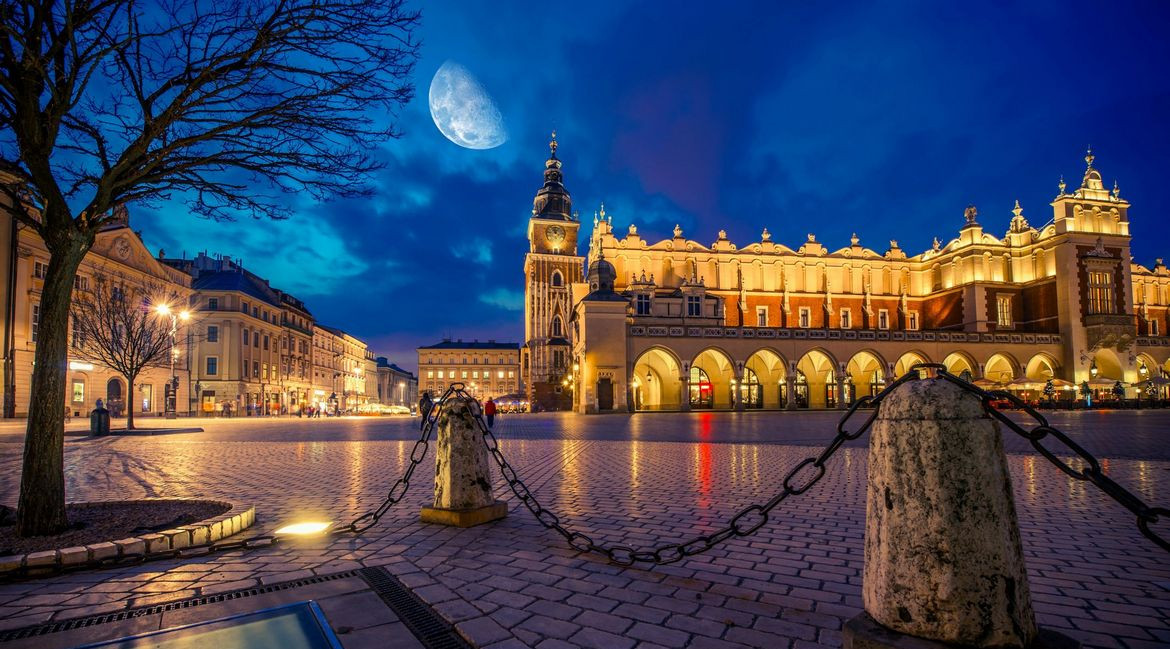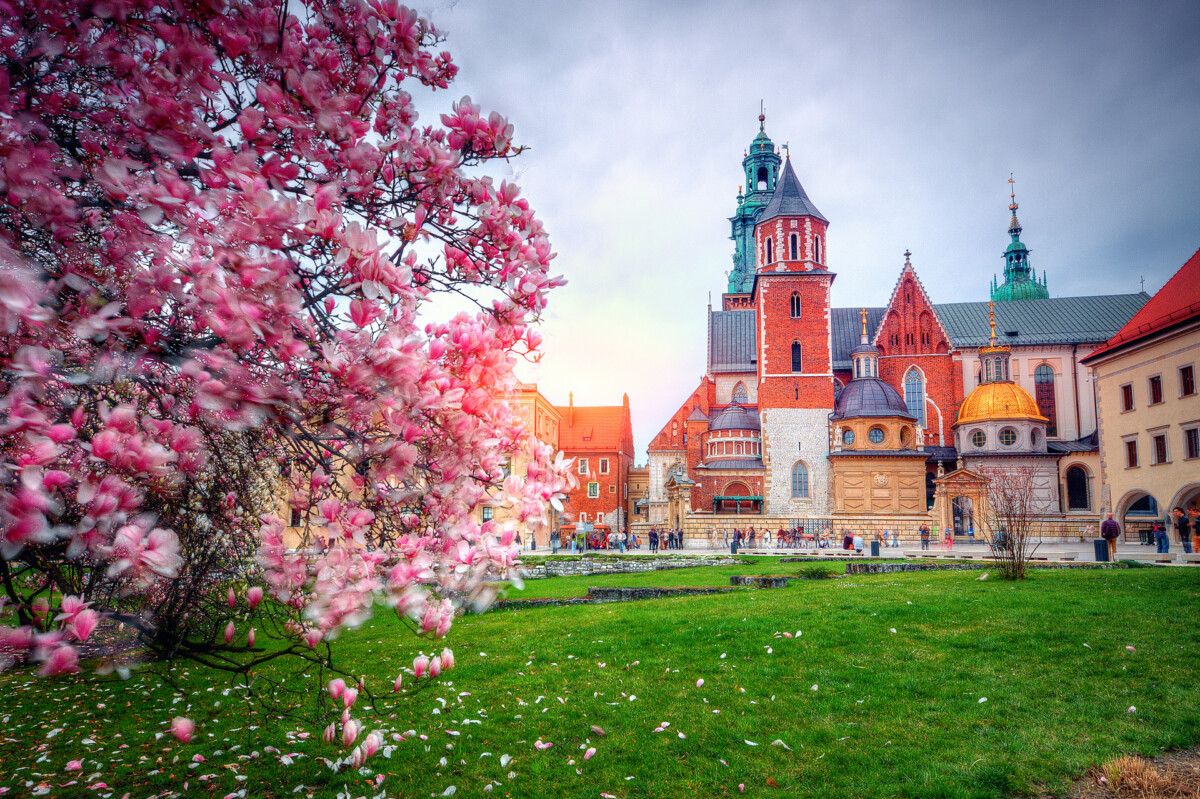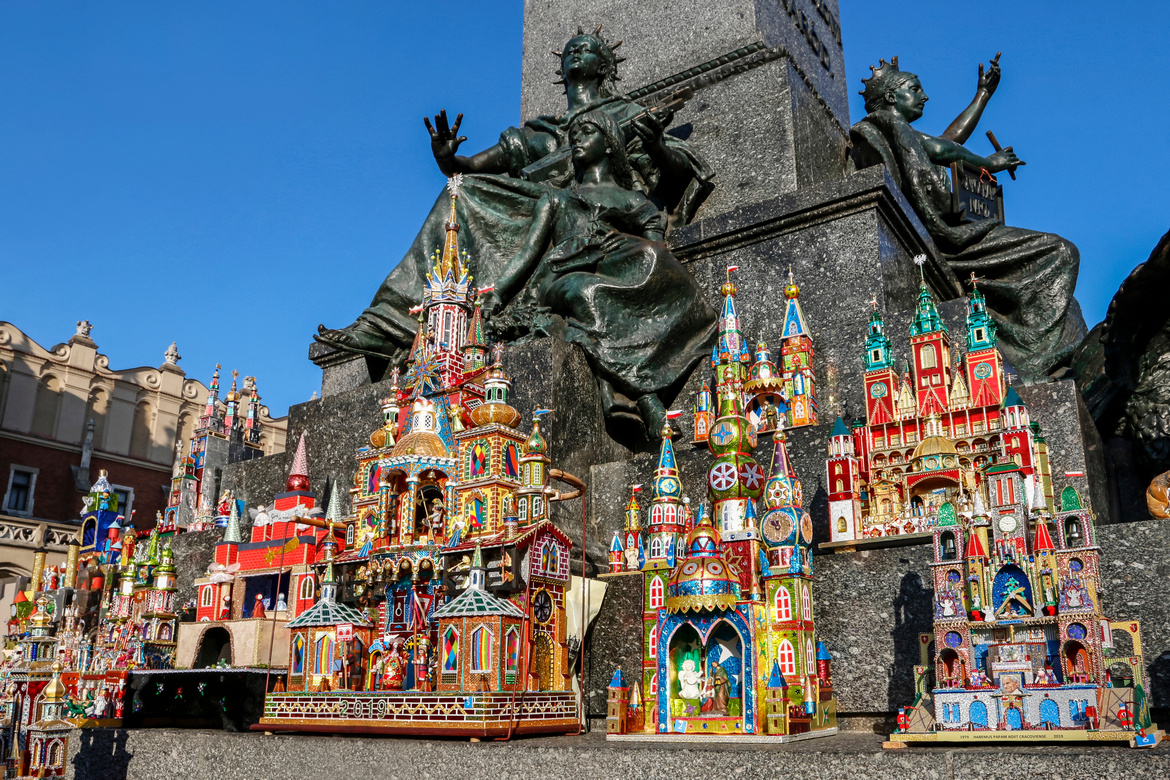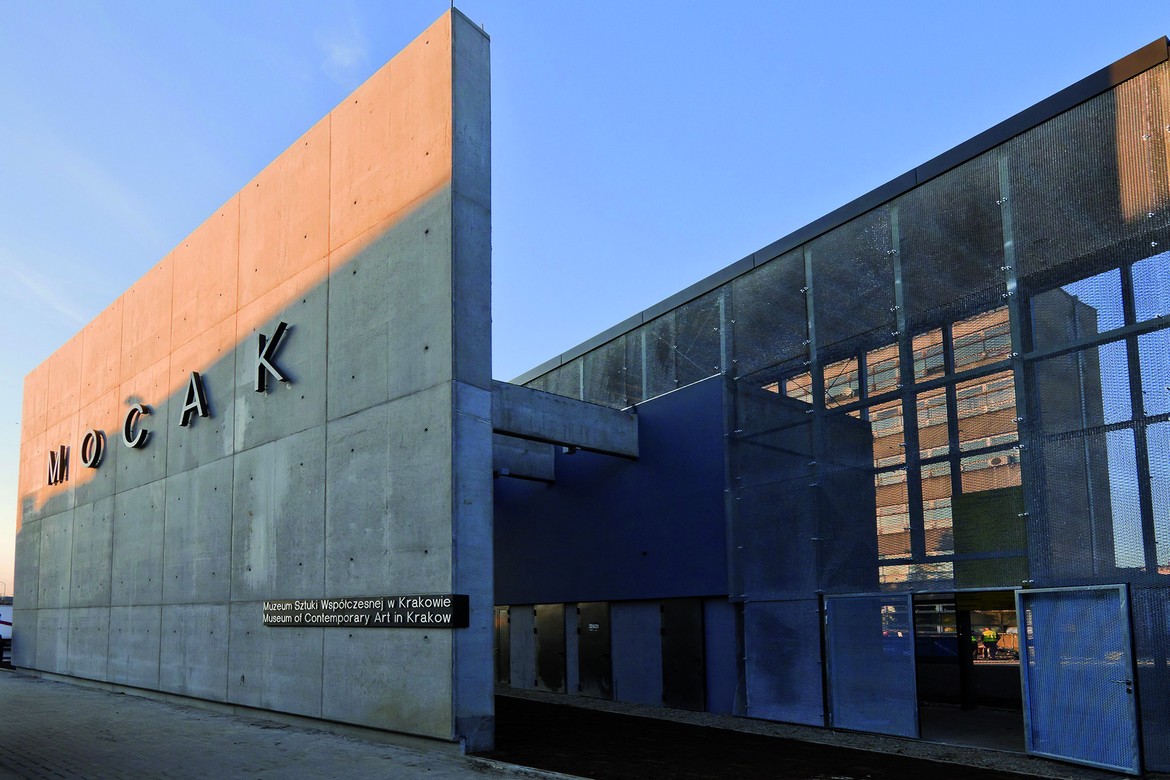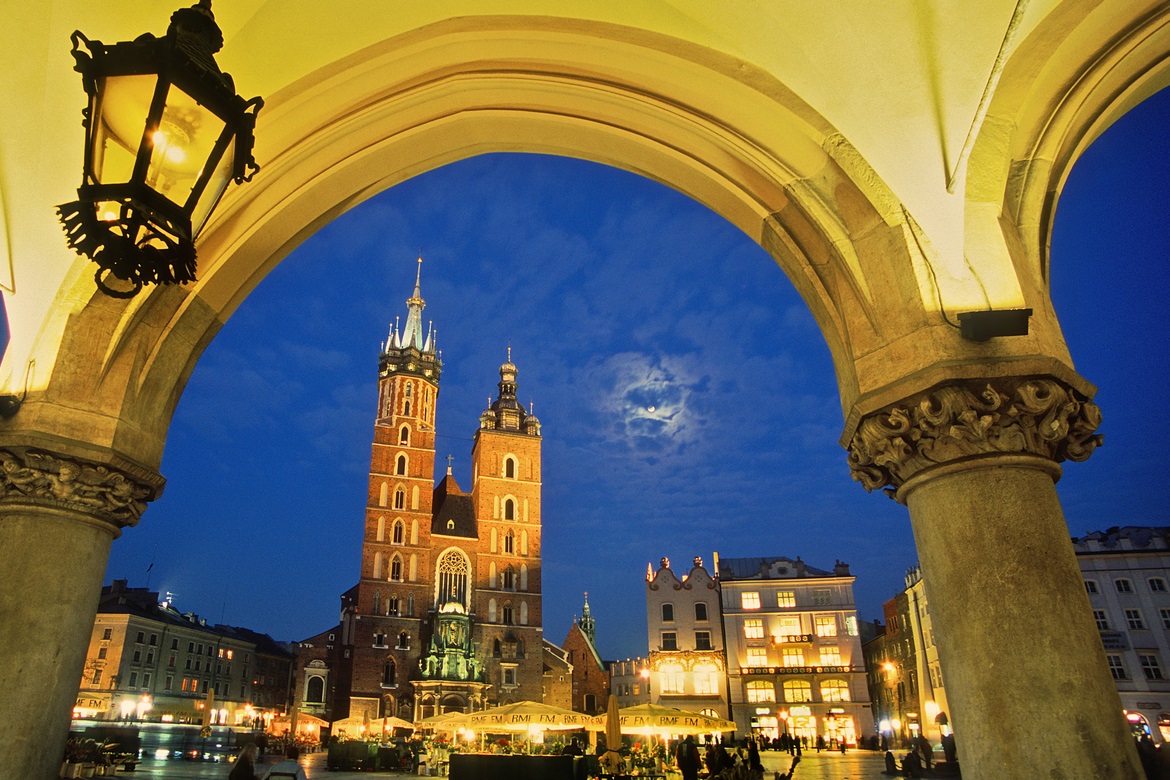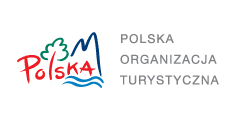Kraków
Kraków
A world brand and the most precious of the pearls in the tourist crown of Małopolska, Kraków is the ideal city for sightseeing, culinary adventures, active leisure, and fun. It is perfect for a quick city-break as well as for longer stays. It is one of the oldest cities and a national heritage treasure, a cultural capital that had once been the capital of the state and also the seat of kings. The Old Town, Kazimierz, Podgórze, Nowa Huta, Zabłocie… Each of Kraków’s districts is a separate microcosm, one of many parts of the ever-expanding Kraków universe.
City of Kings on the UNESCO World Heritage List
Kraków can be absorbed with all the senses. This was once the case, and this is still the case now. The historic capital of Poland, full of legends – for example about Krak, the legendary founder of Kraków – extraordinary stories, priceless monuments, magnificent works of art, unusual flavours, can enchant you and win your heart at first sight.
That was the case in 1978, when it made it to the first and most prestigious UNESCO World Heritage List. Thanks to this action, many of the most valuable monuments in Kazimierz, Stradom, and the Old Town were saved.
The impressive heart of Kraków is the Old Town, which as the name suggests, is its oldest part. To find yourself in this extraordinary world, all you have to do is walk through Planty Park, past the Barbican i an the Florian Gate. In the Old Town, fortunately spared from destruction during the cataclysm of the Second World War, not only every tenement – exuding elegance and chic – and every stone could tell a story.
On the vast Main Square, florists reign supreme and carriage horses tap their hooves, perhaps enchanted like those from Konstanty Ildefons Galczynski’s poem? Doves and pigeons soar over the impressive St. Mary’s Basilica and the Cloth Hall where trade in amber and silver goods, handicrafts, and miniatures of Kraków nativity scenes is flourishing, just like it did centuries ago. On the first floor of this commercial establishment, which since 1879 has been the seat of the National Museum, is the magnificent Gallery of 19th-Century Polish Art. You can admire not only Henryk Siemiradzki’s monumental ’Torches of Nero’, which initiated this extraordinary collection, but also the famous ’Frenzy of Exultation’ by Władysław Podkowiński and magnificent paintings by Jan Matejko and Józef Chełmoński.
When visiting the Old Town, it is also impossible to miss the Czartoryski Museum with its impressive collection of the Czartoryski Princes. Here, we will see paintings by such masters as Leonardo da Vinci and Rembrandt.
Rynek Underground and the two Pantheons
Since 2010, the interactive tourist route Tracing Kraków’s European Identity has been located under the Main Market Square. This is a colourful tale of the history of the urban space where the impressively sized Main Market Square was laid out in 1257. The swirling hologram of St Mary’s Basilica invites you – once you out of it – to take a look at the Arch-Presbyterial Church of the Assumption of the Blessed Virgin Mary with its priceless, beautifully restored Veit Stoss altarpiece.
The heart of the city is the Market Square, where paths criss-cross the City of Kings andthe crossroads of many routes are to be found. It is not far from Wawel Castle, where the Royal Castle and the Archcathedral Basilica of St.Stanislaus and St Wenceslaus are located. The Royal Road will lead there. While touring the city along the Stanislaw Wyspiański Trail, we get to know Kraków through the eyes of the eponymous extraordinary artist and visionary. Planty Park, which surrounds the Old Town with a ring of greenery, allows you to take a break and look at the old city from a slightly different perspective.
It is not far from the second National Pantheon in Kraków, which is located in the basement of the Church of Sts Peter and Paul. Miejsce ostatniego spoczynku znaleźli w nim m.in. Sławomir Mrożek, Adam Zagajewski, and Krzysztof Penderecki are among those whose final resting place is here. The first of them is the Crypt of the Deserved, beautifully called the Cemetery of Great Poles, is located in the basement of the Basilica of St Michael the Archangel and St Stanislaus the Bishop and Martyr on Skałka Hill. Buried there are, among others, Jan Długosz, Wincenty Pol, Józef Ignacy Kraszewski, Henryk Siemiradzki, Jacek Malczewski, Stanisław Wyspiański, Karol Szymanowski, and Czesław Miłosz.
Kraków’s Old Town is also home to hundreds of clubs, cafés and restaurants. In the heart of touristic Kraków, there is undoubtedly something for everyone. The hallmarks of this unusual place are the Wierzynek Restaurant with over 650 years of tradition, and the iconic Piwnica pod Baranami.
Kazimierz – reactivation
It isn’t farfrom the Wawel Castle to Kazimierz. Once a separate town, today it is a picturesque neighbourhood that keeps alive the traditions of its former Jewish inhabitants. From here, at night, near one of the two synagogues at Szeroka Street, the whispers of wedding participants cursed by the rabbi are said to be heard. However, Kazimierz is not only about unusual stories and a great and colourful history, but also a variety of restaurants where you can enjoy, for example, traditional kosher dishes.
Those interested in the history of the lives of the former residents can set off on the Route of Jewish Monuments. It is also impossible to miss the Bohaterów Getta Square, a fragment of the Kraków Ghetto wall at 29 Lwowska Street, and the exhibition at the Schindler’s Factory in Zabłocie, where the memory of the Holocaust is preserved.
Inspiring and controversial architecture
It is also a hallmark of modern Kraków. Standing today on the site of Schindler’s Factory is a building regarded as a pearl of modern architecture, the Museum of Contemporary Art in Krakow, also known as ‘MOCAK’, made of concrete, steel, titanium alloy and glass. Poland’s first post-World War II Museum of contemporary art, MOCAK is an important stop on the Krakow Technology Trail along with the Kraków Glassworks, which is also located in Zabłocie. At your leisure, visit the local intimate restaurants, clubs and wine bars.
The historic power station above which rises an imposing steel and concrete frame, is an architectural reworking of Kant’s idea of imbalance – the wrapping of objects to draw attention to their essence and provoke the discovery of their secrets. This extraordinary building houses Cricoteka Centre for the Documentation of the Art of Tadeusz Kantor. The facility is at Podgórze. And here it is very easy to find numerous clubs and trendy restaurants, such as those that have made their home at Nadwiślańska Street.
Experimental and traditional art
Małopolska Garden of the Arts, combining sound, theatre, installation art and multimedia, is the experimental space of the Juliusz Słowacki Theatre. It is the institution with over a century of tradition, the second oldest in Kraków after the Helena Modrzejewska National Old Theatre.
Of a slightly different nature is the Home Army Museum, recalling the history of the Polish Legions as well as the Polish Underground State and the fate of the people of Krakow during the German occupation. Ithas been organised in the revitalised Kraków Fortress whose brick walls have been repurposed for exhibitions and covered with protective glass. The unique collection of memorabilia and personal effects donated to the exhibition directly by veterans is a delight.
Not to be left out is Nowa Huta – the ideal socialist city, whose creation is recounted in the film ‘Man of Marble’, directed by Andrzej Wajda, among others. It is worth seeing the old, carefully designed Nowa Huta and the later one full of block housing estates. This is because rising in the midst of them is the boat-shaped church of Our Lady Queen of Poland, also known as the Ark of the Lord. In the centre, we will see asuggestive statue of the Risen Christ, who seems to be freeing himself from the cross suspended above the altar to fly towards heaven. It was carved by the eminent contemporary artist Professor Bronislaw Chromy.
So, there is a lot going on in Nowa Huta, today one of the greenest districts in Kraków. While you’re here, it’s also worth checking out the Nowa Huta Cultural Centre and going to the People’s Theatre, visit the Cistercian Monastery in Mogiła, stroll through the Nowa Huta Meadows (a protected area with educational trails), and visit Jan Matejko’s Manor House with a porch designed by the artist along with memorabilia that had belonged to the artist and to Hugo Kołłątaj, and of course, take a stroll through the park surrounding it.
On the trail of unusual collections and flavours
Those who like miniature works of art will probably try to visit The Kraków nativity scene, which is included on UNESCO’s representative list of the Intangible Cultural Heritage of Humanity. Their largest collection has been assembled by the Museum of Kraków, but they can also be found in the urban space and in the display windows of many shops.
Lovers of sky-high travel, unusual histories and great stories should visit the Museum of Polish Aviation, set up on the site of Kraków’s former airport Rakowice-Czyżyny. If you are interested in spectacular scientific experiments, you will probably go to the Stanisław Lem Experimental Garden.
And what are food lovers to do? Explore, and sample the bewildering variety of culinary delights. Even the most sophisticated of culinary palates will find more than enough to satisfy themselves in thehundreds of restaurants where one can dine on the beloved, time-tested traditional fare and on dishes that dazzle with their modern creativity. And don’t forget the cyclical culinary events inspired, for example, by Zapust (carnival) and the traditional delicacy of the Kraków people – obwarzanek (the Living Obwarzanek Museum is therefore worth a visit).
Not without reason, then, in 2019. European Academy of Gastronomy has awarded Krakow the title European Capital of Gastronomic Culture for the first time ever. The Małopolska capital also boasts the only restaurant in Poland – Bottiglieria 1881 – which can boast two prestigious Michelin stars.
And how not to fall in love with Kraków!

